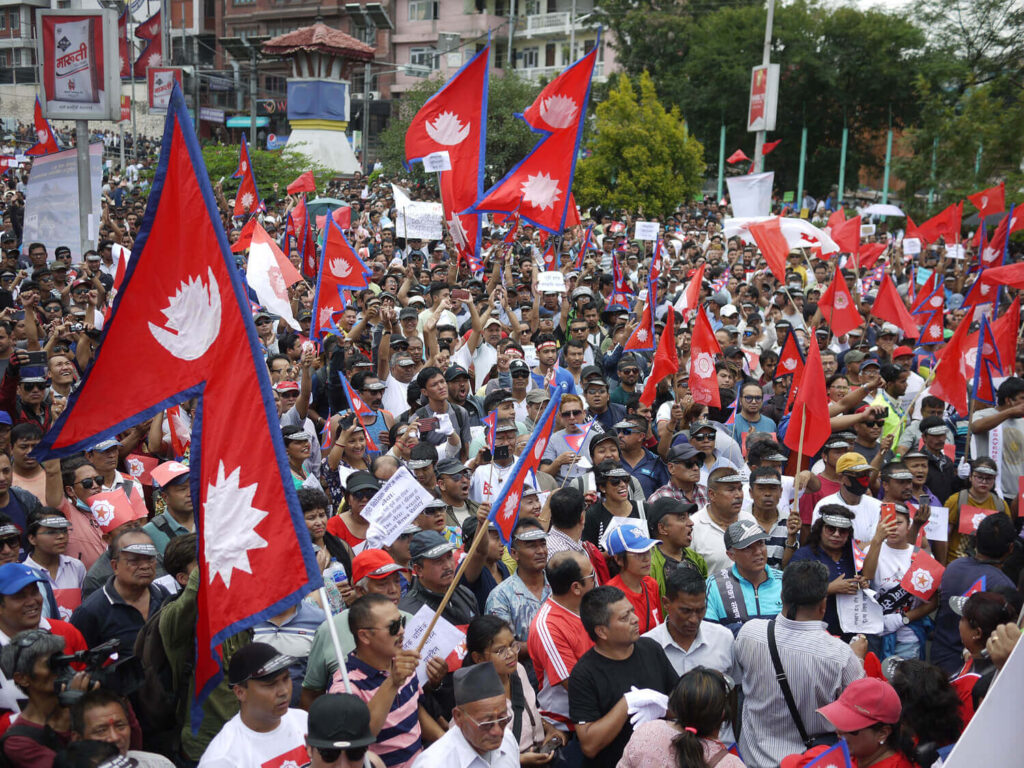
by M A Hossain 3 April 2023
Nepal is a small, landlocked country by two giant powers, China and India in South Asia. It is renowned for its diverse culture, Himalayan mountains and historical landmarks. However, the country has been scuffling with political instability since its multi-party democracy installed. Nepal has come across a political history of coups, unrest, and changes in government. In 1990, the country adopted a new constitution and King Birendra ceded power to the democratic government, But that change did not bring political stability where frequent changes in government and a lack of political consensus remains De ja vu. Nepal’s current political situation is marked by a constitutional crisis, corruption, and political polarization, all of which have significant geopolitical implications.
Nepal adopted a new constitution in 2015, and it created a constitutional crisis, leading to protest and a blocked along the Nepal-India border. The Madhesi community in the Southern Plains claimed that the new constitution was discriminatory, divisive, and controversial. Corruption is another major factor contributing to political instability in Nepal. It is pervasive in Nepali polities and has rusted public trust in government institutions which challenging to build political consensus.
Political polarization is also a significant factor contributing to political instability in Nepal. The deep divide between left-wing and right -wing political forces has made it difficult to build consensus. That causes frequent changes in the government. In recent years, Nepal has experienced multiple changes in government due to internal political conflicts, legal challenges, and prolonged political crises. For instance, in December 2020, Prime Minister KP Sharma Oli dissolved Parliament and called for a new election, leading to protest and a prolonged political crisis. Nepal’s Supreme Court intervened and reinstated the dissolved parliament in May 2021.
In 2023, lawmakers in Nepal have elected a new President amid escalating political instability in the Himalayan nation. The incumbent coalition government, which has succeeded power for only a few months back, is proving to be fragile. Ram Chandra Poudel, a former parliament speaker and senior leader of the opposition Nepali Congress Party, elected as the new President, defeating his sole rival, Subhash Chandra Nembang.
This presidential election has triggered a dispute among the ruling coalition partners. Prime Minister Pushpa Kamal Dahal, who assumed office in December 2022, supported Poudel, leading to a rift with the Communist Party of Nepal(UML), which supported its candidate, Nembang. This division ultimately resulted in the CPN withdrawing from the coalition, and Dahal losing the backing of three crucial political parties that were initially part of his government’s composition.
Nepal’s contribution to India’s internal security framework warrants particular acknowledgement. It also acts as a safe haven for drug cartels, hawala agents, and human trafficking syndicates. Another issue of internal security pertains to the connection or association between Maoist factions operating in both India and Nepal. The Communist Party of India (Maoist) envisions a “red corridor” stretching from Nepal’s southern border, which abuts the Terai region of Uttar Pradesh, to the Western Ghats tri-junction of Kerala, Karnataka, and Tamil Nadu.
China aspires to establish enduring physical connections between the two nations, capable of persisting beyond shifts in governance in Kathmandu. The prospect of reestablishing relations with a leader who previously condemned India as an “expansionist” entity and the US as an “imperialist power” will inevitably disappoint both New Delhi and Washington.
Nepal’s political instability has significant geopolitical implications for the region. Being a buffer state between India and China, any instability in Nepal could affect its relations with its neighboring countries. India is Nepal’s largest trading partner, and the two countries share deep cultural and historical ties. China, on the other hand, has been increasing its influence in Nepal through infrastructure investments and other projects. Nepal’s strategic location between two of the world’s most populous countries contributes its geopolitical importance.
The instability in Nepal may have an impact on the South Asian Association for Regional Cooperation (SAARC), of which Nepal is a member state. The political instability also has an impact on foreign aid and investment, which the country heavily relies on. Already, political instability has resulted in significant economic and social consequences, including negatively impacting its heavily reliant tourism industry. The COVID-19 pandemic has exacerbated the country’s economic and development woes such as poverty, inequality, and infrastructure deficits.
The historiography of political instability in Nepal has been fraught with numerous attempts to combat it, yet they have been largely ineffective due to their failure to address the fundamental underpinnings of the issue. The conundrum of instability persists, casting a shadow over the prospects for Nepal’s future. One potential solution to promote political consensus among Nepali political parties could be achieved through dialogue and compromise among political parties.
